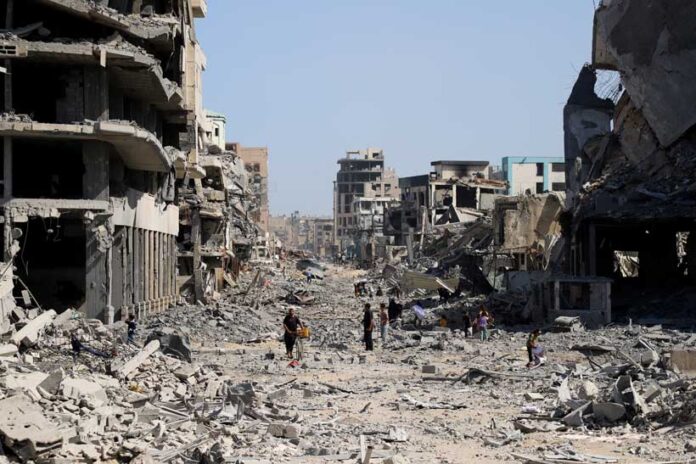Thousands of displaced Palestinians began returning to their destroyed homes in Gaza after a ceasefire took effect and Israeli troops started to withdraw as part of a broader agreement to end the conflict. Many walked along the coastal road toward Gaza City, which had recently faced heavy attacks. Ismail Zayda expressed gratitude that his house was still standing but noted that many neighborhoods were completely destroyed. In Khan Younis, another damaged city, people searched through the rubble, with some like Ahmed al-Brim salvaging firewood for cooking, lamenting the loss of their belongings.
Medical teams reported recovering 100 bodies from various parts of Gaza as the army pulled back. Despite the return of Gazans to their homes, there were concerns about the durability of the ceasefire and a potential prisoner exchange deal between Israel and Hamas. U. S. President Donald Trump expressed optimism about the ceasefire holding, indicating a consensus on the next steps, though he recognized that details needed work.
The ceasefire agreement took effect at noon local time, allowing Israeli troops 24 hours to withdraw from urban areas while still maintaining control over much of Gaza. Trump was set to visit the region, addressing Israel’s parliament and planning discussions on Gaza’s future, including an international summit in Egypt.
The next stage of Trump’s plan includes the establishment of a “Board of Peace” to help manage Gaza after the conflict, which would be led by Trump and include former British Prime Minister Tony Blair. However, Hamas rejected any foreign governance, asserting that Gaza’s rule was solely a Palestinian issue. Israeli Prime Minister Benjamin Netanyahu stated that Israeli forces would remain in Gaza until Hamas was disarmed, emphasizing the need for security.
As the ceasefire progressed, many displaced Palestinians returned from temporary shelters, hoping to see their homeland again, even if only the ruins remained. Houses may have been destroyed, but families like that of Mahdi Saqla were relieved to return to their previous locations after enduring years of displacement.
The Israeli government ratified the ceasefire early on Friday, initiating a series of exchanges where Hamas is expected to release 20 live Israeli hostages in return for Israel freeing 250 long-term Palestinian prisoners and 1,700 detainees. Meanwhile, assistance in the form of food and medical supplies is expected to flow into Gaza.
Both Israelis and Palestinians celebrated the announcement of the ceasefire, which aims to end a war that has resulted in over 67,000 Palestinian deaths. Following the October 7 attack by Hamas that sparked the war, which killed 1,200 people in Israel and resulted in 251 hostages being captured, the security situation remains tense.
While 20 hostages are currently believed to be alive in Gaza, some are presumed dead, and the fate of others is unknown, with difficult negotiations regarding their recovery still ahead. The accord, if successfully put into action, could represent a significant step toward peace, though many uncertainties remain, including the governance of Gaza and Hamas’s status, as the group has refused to disarm in line with Israeli demands. The Hamas interior ministry indicated plans to deploy security forces in areas where the Israeli army has retreated, raising concerns about potential armed confrontations.
with information from Reuters


